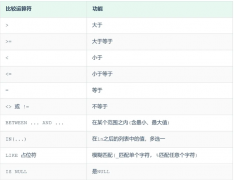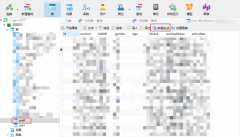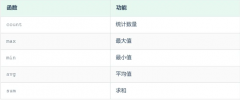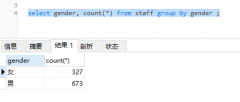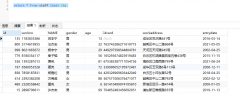Convert Access Crosstab/PIVOT query to T-SQL(将 Access Crosstab/PIVOT 查询转换为 T-SQL)
问题描述
我需要转换为在 SQL Server 下工作的访问查询:
Access Query that I need to convert to work under SQL Server:
TRANSFORM Sum([T_Leads]![OrderType]='New Order')-1 & " / " & Sum([T_Leads]![OrderType]='Change Order')-1
AS [New / Change]
SELECT Employees.EmployeeName as Name, Count(T_Leads.OrderType) AS Total
FROM Employees INNER JOIN T_Leads ON Employees.EmployeeID = T_Leads.EmployeeID
WHERE (((T_Leads.Date)>Date()-7))
and [Employees.LeadRotation] <> "Inactive"
GROUP BY Employees.EmployeeName
ORDER BY T_Leads.Date
PIVOT T_Leads.Date;
输出显示当前担任潜在客户(非不活跃")的员工列表.对于列标题,会显示前 7 天的日期(如果当天提交了潜在客户),并且每个日期下会显示两个总数.一个是收到的新订单总数,另一个是变更订单的总数.我找不到任何生成日期列并显示两个值的示例在每一列下.
The output displays a list of employees currently taking leads (who are not "inactive"). For the column headers, the date is shown for the previous seven days (if a lead was submitted on that day), and two totals are displayed under each date. One for the total number of New Orders received, and another for total number of Change Orders. I've not been able to find any examples that generate the date columns and display two values under each column.
Access 查询当前在 GridView 中产生如下输出:
The Access query currently produces output like this in a GridView:
+-------------+-------+----------+----------+----------+----------+-----------+
| Name | Total | 4/5/2016 | 4/6/2016 | 4/7/2016 | 4/8/2016 | 4/11/2016 |
+-------------+-------+----------+----------+----------+----------+-----------+
| Doe, Jane | 9 | 0/1 | 0/2 | 0/3 | / | 0/3 |
+-------------+-------+----------+----------+----------+----------+-----------+
| Guy, Some | 4 | 0/1 | 0/1 | / | / | 0/2 |
+-------------+-------+----------+----------+----------+----------+-----------+
| Doe, John | 10 | 0/1 | 1/1 | 2/1 | 0/3 | 0/1 |
样本数据:
| EmployeeID | Customer | Date | OrderType|
+-------------+------------------+------------+----------+
| 1 | Fake Customer | 2016-05-14 | New |
+-------------+------------------+------------+----------+
| 2 | Some Company | 2016-05-13 | Change |
+-------------+------------------+------------+----------+
| 3 | Stuff Inc. | 2016-05-14 | New |
+-------------+------------------+------------+----------+
| 3 | Cool Things | 2016-05-12 | Change |
推荐答案
IF OBJECT_ID('tmpEmployees_Test', 'U') IS NOT NULL DROP TABLE tmpEmployees_Test;
CREATE TABLE tmpEmployees_Test (EmployeeID INT, EmployeeName VARCHAR(255));
INSERT tmpEmployees_Test (EmployeeID, EmployeeName)
VALUES (1, 'Doe, Jane'), (2, 'Doe, John'), (3, 'Guy, Some');
IF OBJECT_ID('tmpOrders_Test', 'U') IS NOT NULL DROP TABLE tmpOrders_Test;
CREATE TABLE tmpOrders_Test (EmployeeID INT, Customer VARCHAR(255), Date DATE, OrderType VARCHAR(255));
INSERT tmpOrders_Test (EmployeeID, Customer, Date, OrderType)
VALUES (1, 'Fake Customer', '2016-05-14', 'New')
, (2, 'Some Company', '2016-05-13', 'Change')
, (3, 'Stuff Inc.', '2016-05-14', 'New')
, (3, 'Cool Things', '2016-05-12', 'Change')
, (3, 'Amazing Things', '2016-05-12', 'Change');
DECLARE @columns NVARCHAR(MAX), @sql NVARCHAR(MAX);
SET @columns = N'';
SELECT @columns += N', p.' + QUOTENAME(Name)
FROM (SELECT distinct CONVERT(nvarchar(30) , p.Date , 101) as Name FROM dbo.tmpOrders_Test AS p where [Date] > GETDATE()-7
) AS x;
-- Kept it for formatting Purpose
DECLARE @columns1 NVARCHAR(MAX)
SET @columns1 = N'';
SELECT @columns1 += N', ISNULL(p.' + QUOTENAME(Name) + ',''/'') AS ' + QUOTENAME(Name)
FROM (SELECT distinct CONVERT(nvarchar(30) , p.Date , 101) as Name FROM dbo.tmpOrders_Test AS p where [Date] > GETDATE()-7
) AS x;
SET @sql = N'
SELECT EmployeeName, Count(*) as Total ' + @columns1 + '
FROM
(
SELECT EmployeeID, EmployeeName' + ''+ @columns1 + '' + '
FROM
(
SELECT o.employeeID,EmployeeName, CAST(COUNT(case WHEN OrderType = ''New'' then 1 end) as varchar(5)) + ''/'' +
CAST(COUNT(case WHEN OrderType = ''Change'' then 1 end) as varchar(5)) as OrderType, CONVERT(nvarchar(30) , p.Date , 101) as Date
FROM dbo.tmpOrders_Test AS p
INNER JOIN dbo.tmpEmployees_Test AS o
ON p.EmployeeID = o.EmployeeID
GROUP BY EmployeeName, Date, o.employeeID
) AS j
PIVOT
(
Max(OrderType) FOR Date IN ('
+ STUFF(REPLACE(@columns, ', p.[', ',['), 1, 1, '')
+ ')
) AS p) as p JOIN tmpOrders_Test as m on p.employeeID = m.employeeID
where [Date] > GETDATE()-7
GROUP BY EmployeeName ' + @columns + '
';
PRINT @sql;
EXEC sp_executesql @sql;
这是使用动态 Pivot.您可能希望在应用程序或报告端而不是复杂的 sql 上执行此业务逻辑.
This one is using dynamic Pivot. You might want to do this business logic on Application or Reporting Side instead of complex sql.
这篇关于将 Access Crosstab/PIVOT 查询转换为 T-SQL的文章就介绍到这了,希望我们推荐的答案对大家有所帮助,也希望大家多多支持编程学习网!
本文标题为:将 Access Crosstab/PIVOT 查询转换为 T-SQL


- 如何使用 pip 安装 Python MySQLdb 模块? 2021-01-01
- 导入具有可变标题的 Excel 文件 2021-01-01
- 如何将 Byte[] 插入 SQL Server VARBINARY 列 2021-01-01
- 以一个值为轴心,但将一行上的数据按另一行分组? 2022-01-01
- 如何将 SonarQube 6.7 从 MySQL 迁移到 postgresql 2022-01-01
- SQL 临时表问题 2022-01-01
- 远程 mySQL 连接抛出“无法使用旧的不安全身份验证连接到 MySQL 4.1+"来自 XAMPP 的错误 2022-01-01
- 在SQL中,如何为每个组选择前2行 2021-01-01
- 更改自动增量起始编号? 2021-01-01
- 使用 Oracle PL/SQL developer 生成测试数据 2021-01-01
